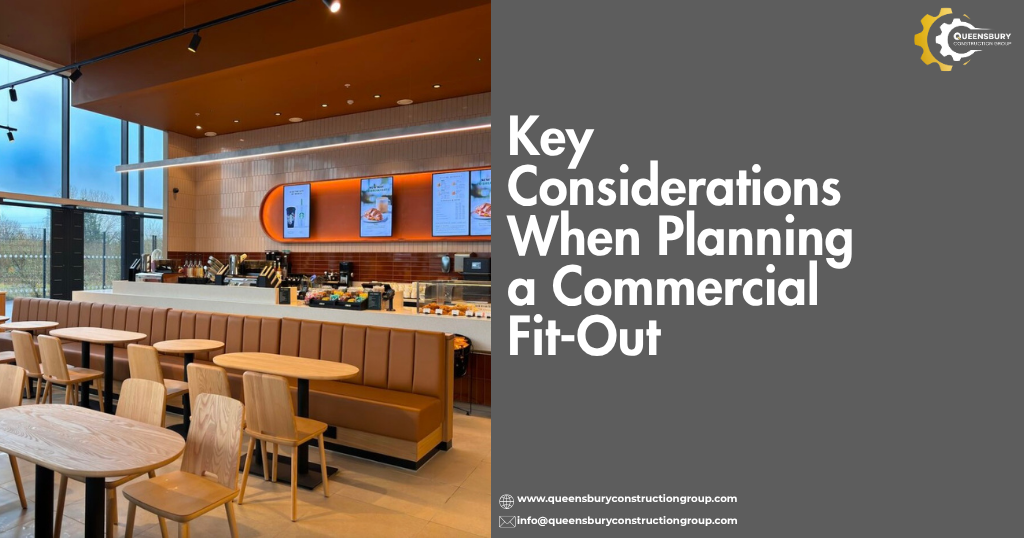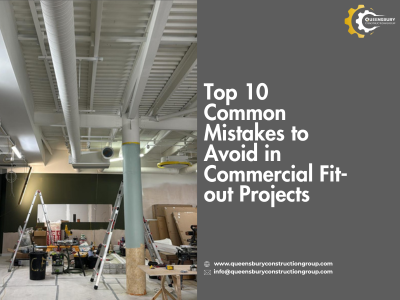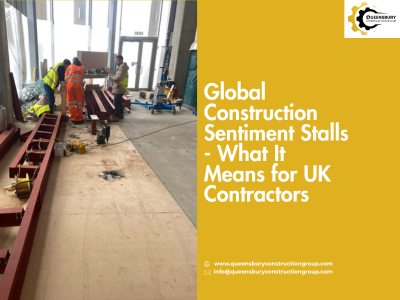 A partner you can trust
A partner you can trust
Stay informed with expert insights, industry trends, and the latest updates to help you make informed decisions.

Planning a commercial fit-out can feel like a big task. If you’re expanding, relocating, or refreshing your space, understanding the process helps you stay on track and avoid expensive mistakes. Let’s explore the key areas you should focus on.
A commercial fit-out refers to the process of designing and building the interior of a commercial space. It takes an empty or shell space and turns it into a usable workplace.
The work typically involves installing floors, ceilings, partitions, lighting, and furniture. In some cases, it can also encompass mechanical and electrical services, such as air conditioning and data cabling.
Fit-outs are common in various industries, including offices, retail, and hospitality. Each project differs depending on the business needs and the existing condition of the building.
When setting up a new office, a commercial fit-out service ensures that the space reflects your brand and supports your day-to-day operations.


A fit-out encompasses all activities necessary to prepare an interior for occupation. It usually includes:
Think about the last time you walked into a newly opened shop or office. Everything from the reception desk to the meeting rooms was installed through a fit-out process.
Fit-outs do not include structural work to the building itself. They focus purely on the internal space.
When planning your project, you may come across terms like Category A and Category B fit-outs:
Understanding the type of fit-out you need will guide your budget and timeline.
Commercial fitting refers to the installation of fixtures, fittings, and equipment necessary for a commercial space to function effectively. It is often considered a part of the broader fit-out process.
For example, outfitting a restaurant might include installing kitchen equipment, seating, lighting, and point-of-sale (POS) systems.
A professional fit-out contractor will manage the fitting process to make sure everything is completed to a high standard and ready for business use.
Every fit-out project follows a series of logical steps. Knowing what to expect can help you stay organised and avoid surprises.
Start with clear goals. What do you need from the space? How many people will use it? What type of work will take place?
Write a brief that outlines your needs and expectations. This document will guide the design and construction phases.
Determine how much you can invest. Include allowances for professional fees, materials, labour, and unexpected costs.
A detailed budget can keep your project on track and prevent delays. Remember, cheaper options may end up costing more in repairs later.
Selecting the right contractor and design team is critical. Look for proven experience in commercial fit-outs and ask for references.
You can partner with experts who understand local building codes and regulations. They can also guide you through approvals and compliance requirements.
Are you comfortable letting a less experienced team handle your investment?
Work closely with your designers to create a layout that maximises the use of space. Consider natural light, workflows, and accessibility.
Good design is not just about how the space looks. It impacts how people work, collaborate, and feel when they’re there.
Involve your staff in the process to gather feedback and ensure the final design meets their practical needs.
You may need permissions such as building control approvals, landlord approvals, or planning permissions. Ensure these are in place before commencing work.
Failing to secure approvals can delay the project and increase costs.
Once you have obtained approvals and designs, construction can begin. This phase includes demolition (if needed) and installation of services, walls, floors, ceilings, and fittings.
Regular site meetings can keep you informed about progress and help resolve issues promptly.
After construction, you will complete a handover process. Inspect the work to ensure it meets the agreed-upon specification.
Consider conducting a snagging inspection to identify any minor defects that require attention.
Plan your move-in carefully. Arrange for IT setup, furniture delivery, and any other final touches to be ready before the big day.
Even after moving in, you may need support. Some contractors offer post-completion services such as maintenance or warranty repairs. Having a reliable partner can make it easier to resolve issues without disrupting your business.
A well-planned fit-out can support your business goals and create a space where your team can perform at its best. By understanding each step and working with the right people, you can deliver a project that fits your needs and budget. Take the time to plan carefully, and your new space will serve you well for years to come.
Queensbury Construction Group delivers fit-out projects with attention to detail and a focus on practical outcomes. We work with businesses across the UK to plan, design, and provide commercial spaces that meet their operational needs.
If you’re planning a new office, retail, or hospitality fit-out, we’re ready to help. Get in touch today, and let’s start the conversation.






tackling everything from changes in planning policy to home renovation advice
Contact Us
Leave A Comments